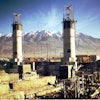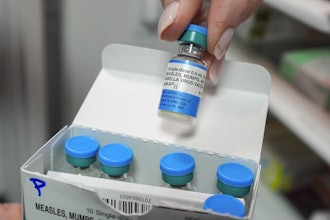If you would have seen the Niland Geyser back in 1953, you wouldn’t have been impressed. It’s located near the Mexican border in California’s Imperial County, and as far as life-threatening natural phenomena go, it’s still just a big, foul-smelling mud puddle.
The problem is that it’s moving … and growing.
For the first five or so decades of its existence, the Niland Geyser was basically an unspectacular geothermic feature that brought water and carbon dioxide up from a plate line created by a previous earthquake along the southern end of the San Andreas Fault. It didn’t shoot into the air like Old Faithful, or let off steam like a hot spring. It just bubbled up at about 80 degrees Fahrenheit. Better described as a mud spring, the Niland Geyser is more like a sinkhole than a geyser, except all the mud from the fault actually bubbles to the top instead of sinking to the bottom.
But enough about the geology. The real issue is that about 11 years ago, the Geyser started to move. At first the pace was pretty slow, but in the last six months it’s travelled about 60’, including six feet in a single day. In total it’s crept 240’ since 2007. And as it moves, the top 40’ of ground is weakened and made unable to support any type of structure. Its’ basin currently measures 18’ deep and 75’ wide.
And now it’s very close to a Union Pacific railway, California State Route 111, a petroleum pipeline and a fiber optic telecommunications line. And as if California doesn’t have enough to worry about right now, this sinkhole geyser has been declared a state-level emergency.
Engineers have made numerous attempts at stopping the creep. The geyser’s basin has been drained, and wells have been dug. Union Pacific even built a wall that went 75’ deep to try and cut the geyser off, but the mud just seeped underneath it in trudging toward the tracks.
In addition to the billions of dollars in potential infrastructure damage, the geyser also brings a wonderful combination of carbon dioxide and hydrogen sulfide from underground – creating a rotten eggs smell, and if anyone were to fall into the basin, they would suffocate almost immediately.
While Union Pacific has built an alternate track, no plans are currently in place for the road, pipeline and communications cables.






















